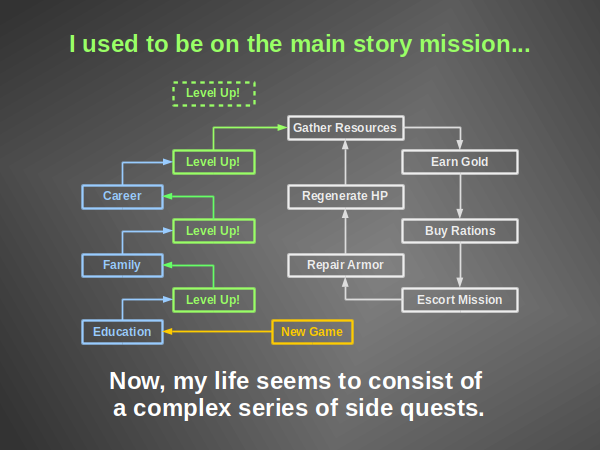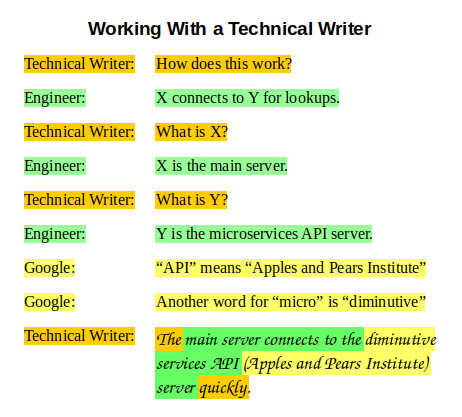Bad Design: WinZip – An Annoying Pop-Up Ad from an Irrelevant Product
The company where I am currently employed uses WinZip as its desktop standard for archive software.
This isn’t my preferred option, but whatever.
One minute, I’m cruising around in a spreadsheet, and the next, this pops up:

They company in question has an enterprise license for WinZip, which means that I’m running a fully-licensed copy.
I will cover some of the history of WinZip, and why I think it’s irrelevant, and then I will tell you exactly why I think this pop-up is wrong. I will also make some recommendations for both software designers and corporate desktop administrators.
Some History
…and, “Why I think WinZip is irrelevant”
Back in the DOS days, there were competing lossless file compression standards, and that’s still true today.
In the 1980’s and early 90’s, disk space was always at a premium, whether it was deciding what to delete off your hard drive so that you could install a new program, or how many programs you could back up to a floppy disk.
And, before the internet, you connected to Bulletin Board Systems (BBSs) through a very slow modem to find and download software. Smaller files meant that a BBS could host more files, and also, that your download time would be significantly faster.
The first commonly-used compression program for microcomputers was simply called “ARC”. Not only did ARC compress files, but it had the ability to compress multiple files in to a single “archive” file, and later versions could even span multiple floppy disks – handy if you were backing up your hard drive.
Due to its ease of use, single-file archive format, and itself being a small file that was easy to find and download, ARC quickly became standard among BBS operators and users. Every PC in the 80’s had a “C:\UTILS” folder, and ARC was one of the programs inside of it.
Although ARC was commercial software developed by SEA corporation, it was distributed as “shareware” – a license that allowed both individual users and BBS operators to freely “share” the file by copying it, but requested that users send in some money and obtain a proper license if they decided to keep using it. Of course, no one did that, and eventually, SEA released the source code for ARC.
A couple of years later, along came Phil Katz, who wrote a much faster and more efficient implementation of ARC, of course called PKARC, and rather than have both compression and extraction functions within the same executable, Phil Katz split the extraction function in to a separate program called PKXARC. This meant that you could download the much more svelt PKXARC if all you needed to do was extract files without compressing them, but in either case, you would benefit from the much faster code.
PKARC soon became the de facto tool for using ARC files.
Later, Phil Katz co-developed the ZIP file format – the same one that’s in use today. And, like ARC, everyone started using ZIP files, especially popular with BBS operators due to the smaller file sizes and faster extraction routines.
Soon, like ARC, every PC had PKZIP and PKUNZIP in their C:\UTILS folder alongside PKARC and PKXARC. Eventually, people just stopped using ARC altogether.
And thus, Phil Katz built the bulk of the PKWare software empire off of one little shareware utility.
However, PKZIP had one major drawback: It was a command-line program, requiring some knowledge of what a command line is, how to use it, and how to use PKZIP within it.
As operating systems evolved toward Graphical User Interfaces (GUIs) and began to focus on ease-of-use, there was clearly a gap.
You could download a ZIP file from a BBS using your terminal program running in a window, but then you would have to shell out to a command prompt and run some arcane (pun intended) commands to extract the files within it, in to a usable format.
In the early 90’s WinZip emerged as a graphical front-end to PKZip. With PKZip installed, and with WinZip properly installed and configured, a user could simply double-click on a zip file to extract its contents, or drag and drop some files to create a new ZIP file. WinZip handled the user interface, and on the back end, it ran PKZip with the appropriate command-line switches.
Eventually, WinZip adopted a “clean-room” ZIP implementation, and dumped PKZip. Now, there was no complicated dependencies nor configuration. If a user needed to open a zip file, they could simply download and run WinZip as a single program.
As Windows 95 boosted the popularity of home computing, WinZip quickly became much more popular than PKZip. PKWare made a feeble attempt to release a competing GUI product, but it was too-little, too-late. WinZip had been on the market longer, most users were familiar with it, it had better desktop integration, and it was far easier to use.
By the late 90’s, WinZip was one of the first programs you needed to download after any new operating system was installed.
Similar to PKWare, WinZip had a “trialware” license that allowed you to freely use it for a couple of weeks, and then either delete it or license it.
To help drive revenue, unlicensed copies of WinZIp would pop up a friendly reminder. Once you entered a license code, the reminder disappeared. Further, a license was perpetual, and initially allowed for perpetual upgrades. So for about $10 (if I recall), not only could you license WinZip to get rid of the annoying pop-up, but you could also freely download and upgrade to the latest version every couple of months when it was released.
WinZip prospered as it virtually ruled the market. Over time they added new features and updated the GUI, but WinZip was still WinZip.
And then Microsoft released Windows XP, which had built-in support for zip files.
It’s hard to believe that Microsoft turned a blind eye to this lucrative niche for nearly 10 years, but on the other hand, they were probably gun-shy after having recently fought off anti-trust litigation from Netscape. In versions of Windows prior to XP, if you double-click on a ZIP file without WinZip (or another ZIP handler) installed, you more or less get a message that says “what the heck do you want me to do with this??”
Now, with Windows XP and onward, you could double-click a ZIP file to open it, or right-click some files and send them to a “compressed folder”, which is Microsoft’s codename for a ZIP archive file.
Even worse for WinZip, by the time Microsoft released XP, there were Free and Open Source Software (FOSS) alternatives such as WinRAR and 7-Zip. Initially, each of these only supported a proprietary archive format (RAR and 7z respectively), but eventually they both ended up supporting multiple archive formats, including ZIP, and even the advanced features of the ZIP format, such as media spanning and AES encryption.
And, WinZip’s market began to dry up.
Casual users didn’t need to download anything – they simply used the operating system’s built-in ZIP file handler.
Power users could download FOSS utilities for free, such as WinRAR and 7-Zip, and simply avoid both the cost of WinZip and its increasingly clingy, laggy user interface and more frequent and annoying beg-ware pop-ups.
As it turns out, switching from a perpetual to an annual license model was a smart move for WinZip.
Rather than die out like ARC and PKZip, there is just enough recurring revenue from corporate licensees to keep it on life support.
So, despite being completely obsolete, WinZip is still running out there, with it’s ever-more kludgy and annoying user interface, limited features, and annoying pop-ups.
And, companies like the one I work for are still running it, because, hey, it works, and hey, they still have a license for it.
Why Pop-Up Ads are Bad
<RANT>
In case you don’t remember using a computer in the 2000’s, let me describe what it was like:
- “Windows has some updates for you!”
- “Update to the LATEST version of Adobe Flash to view this page!”
- “Adobe Acrobat needs to be updated.”
- “Your virus definitions are out of date.”
- “You’re not running the latest version of WinDVD / WinAMP! Download it now!”
- 10 browser pop-ups for spray tanning you should buy online, software that can clean your PC, stock you must buy immediately, adult websites you HAVE to try right now, the truth about “x”, and whatever else you don’t care about.
Play this every couple of hours on endless repeat while you’re trying to edit a document or watch a movie.
PEOPLE. HATE. POP-UPS.
People hate pop-ups so much that every modern browser has a built-in pop-up blocker – code that specifically stops a website from opening new browser windows.
People hate pop-ups because they are pre-emptive. You have to STOP doing what you WERE doing (which was important to YOU), and click “close” on a useless pop-up. You can’t ignore a pop-up, because it’s right there, blocking whatever you were working on behind it. It’s even worse when you’re typing, because you have to take your hands off the keyboard, which is both slow and distracting.
People HATE them.
So why have a completely random pop-up inside a fully-licensed product??
If I was running the trialware version (if that even still exists), then a pop-up is justified when I first launch the program. “Hey… we see that you still haven’t registered…” OK, fine.
BUT I HAVE registered. It’s fully-licensed. And, I DIDN’T EVEN HAVE WINZIP RUNNING!! So it obviously has hooks in to the scheduler (Microsoft’s biggest architectural mistake, but that’s another story) for the sole purpose of trying to sell me more WinZip crapware, that I can only assume has even MORE pop-ups!
What’s even worse is that I don’t need any of the “new features”, and I don’t want them. I don’t need some crappy product “running tasks in the background” or “sorting through my photos”.
All I need to be able to do is encrypt a ZIP file and read encrypted ZIP files.
BUT, because I’m on a corporate laptop, rather than downloading a superior product like 7-Zip, which is simple, fast, and free, I’m forced to run WinZip and deal with bulky, slow software and random crappy pop-ups. What a user experience!
</RANT>
Just let this sink in for a minute… My recent experiences with WinZip have been so frustrating that I just spent 3 hours of my personal time writing this blog post.
Tips for Corporate Desktop Admins
Why do corporations still use WinZip? Probably one of several reasons:
- You have used it for years. So what. The current version is a kludgy piece of crap. Move on.
- You already own a license. This falls under the sunk cost fallacy. Once an investment significantly diminishes in utility, the best course of action is to STOP SPENDING MONEY ON IT.
- We have to train our users. No, you don’t. The 7-Zip interface is similar to the WinZip classic interface, and anyone who has used a computer within the last decade will figure it out.
- WinZip is secure. So are 7-Zip and WinRAR. But, now that no-one out in “the real world” is running WinZip, finding new vulnerabilities is much more difficult. Existing WinZip deployments could sit on desktops for years in a vulnerable state. In contrast, with 7-Zip being one of the most popular pieces of FOSS of all time, there is lots of active development, and any vulnerability would be quickly identified and patched.
- “Open Source” licensing is questionable. No, it’s not. Have your legal department review and approve the GPL and move on.
- Being open-source, there is little or no support. IT’S AN ARCHIVE UTILITY. HOW MUCH SUPPORT DO YOU REQUIRE? Having said that, there’s probably more support out there for 7-Zip than any Microsoft or IBM product. (Microsoft is the new IBM, they just don’t know it yet.)
- It’s difficult to deploy. You don’t even have to install it. Just copy the files and run it.
- It’s expensive. The “F” in FOSS stands for “Free”.
Tip of the day: DUMP WINZIP. STOP WASTING MONEY ON MAINTENANCE AND LICENSING. MOVE ON TO A SUPERIOR SOFTWARE PRODUCT.
Tip for Software Designers
If you are Microsoft:
If someone is making MILLIONS OF DOLLARS selling an add-on to your flagship operating system, hint, you might want to BUY THEM. Loot the codebase, integrate the functionality, and move on.
If you are a startup company with a niche product:
- Stay within your lane. Don’t over-innovate. Keep the feature set simple.
- Keep the User Interface as simple as possible. People are using your product out of necessity, not preference. They don’t want 15 levels of menus, nor “innovative” user interface elements. Keep it simple and fast.
- Don’t get greedy. You have a niche product, not a “desktop suite”. Charge users a few bucks for each license, and keep the product as simple as possible.
- Pivot when needed. Despite being battered in to the dirt by WinZip, PKWare didn’t go out of business. Currently, they are out of the desktop archiver market, and their current product offering is focused on security.
- Sell out at the top, not the bottom. Because you have a niche software product, someone will eventually come along who sells a better / faster / cheaper product. Once you begin to lose market share, it’s already too late. You WILL eventually have to sell – do you want to sell while your company is dominating the market, or as you walk out of bankruptcy court?
- NO POP-UPS. Remember your place. I don’t “WinZip” on my computer daily. I do a lot of things, and products like WinZip are a very small part of it. The LESS interaction I have, the better.
Enough ranting, I think my points are clear.







